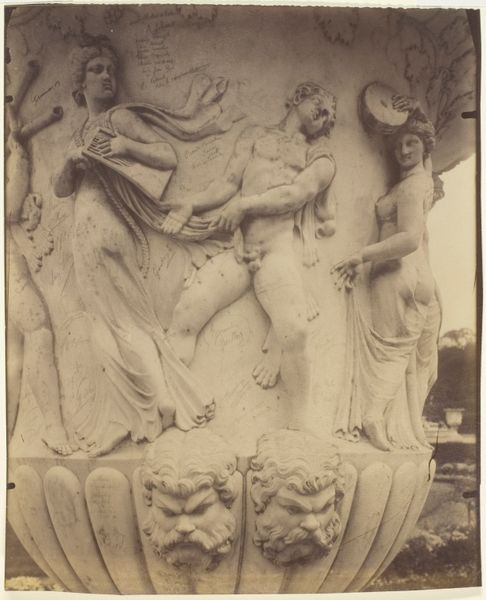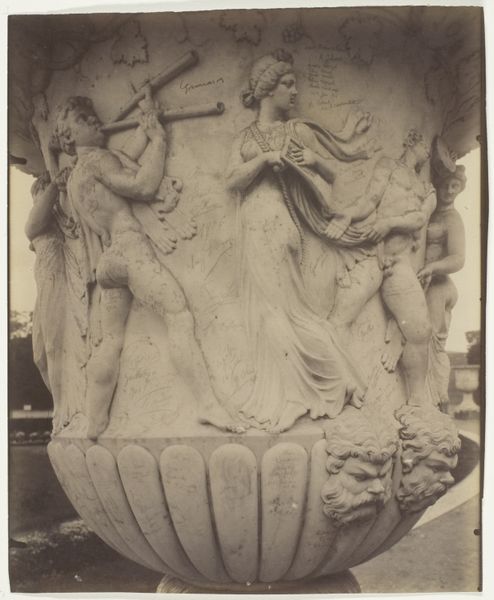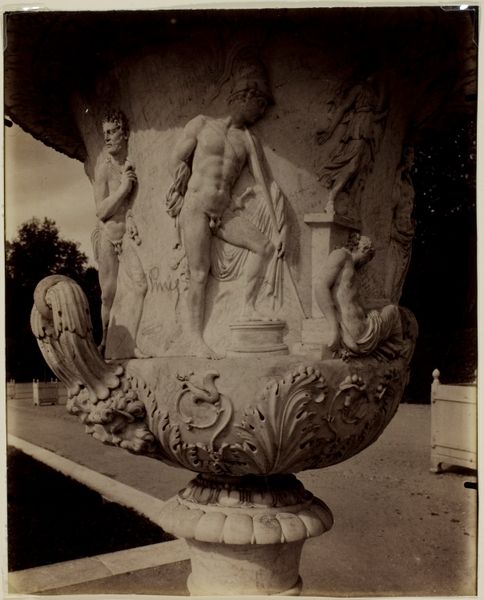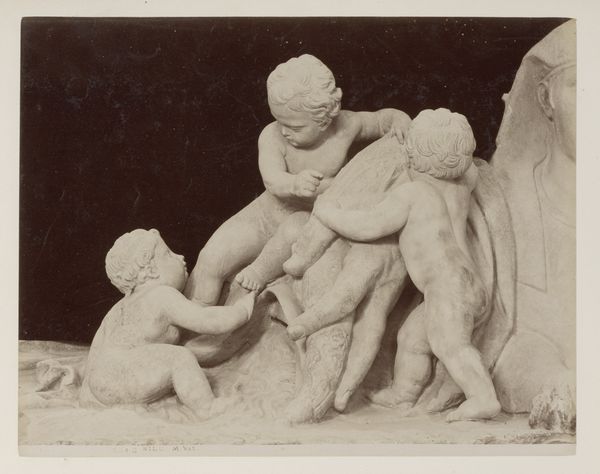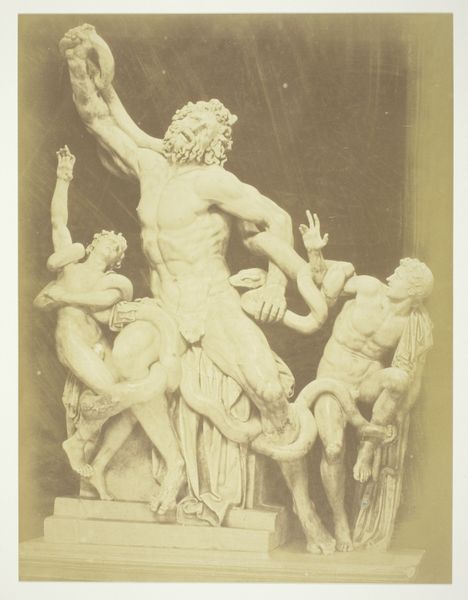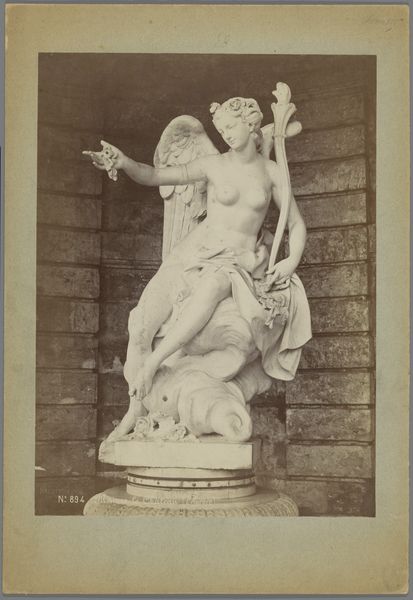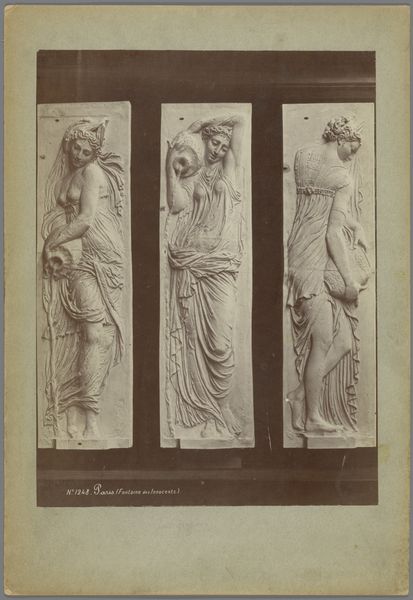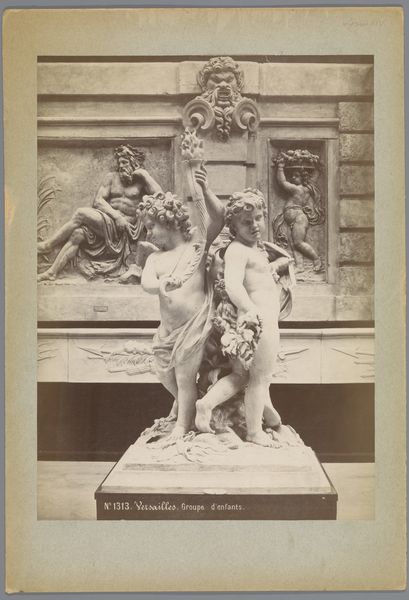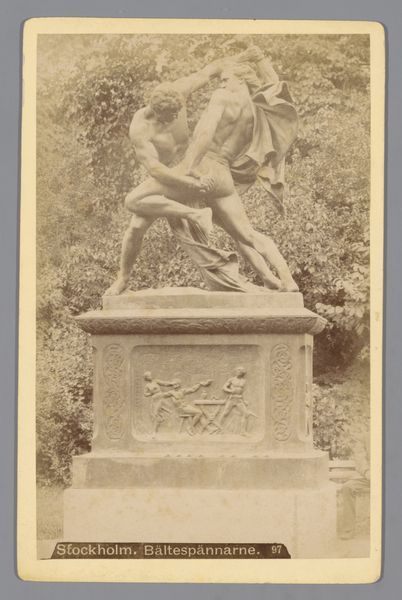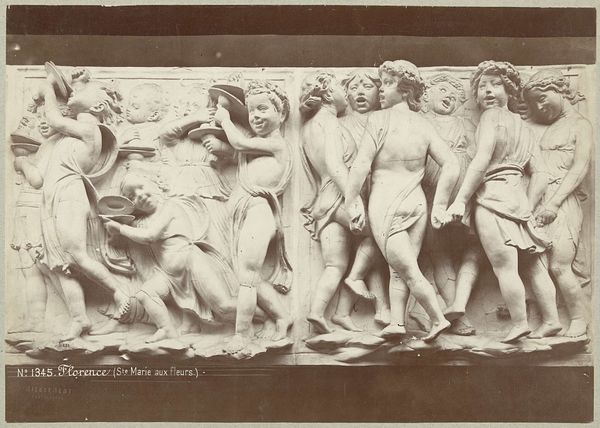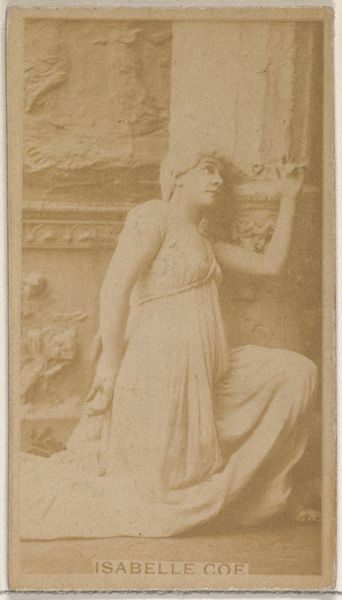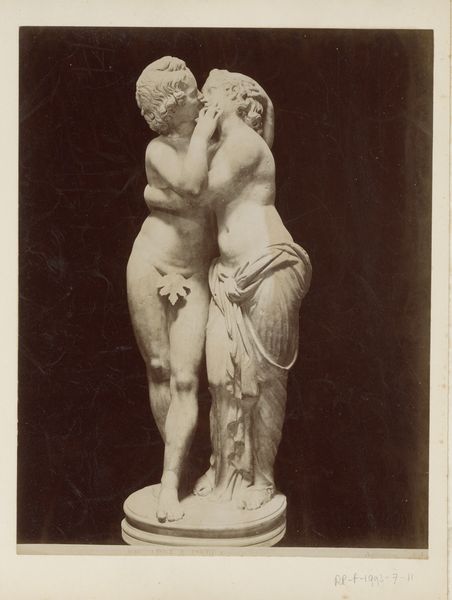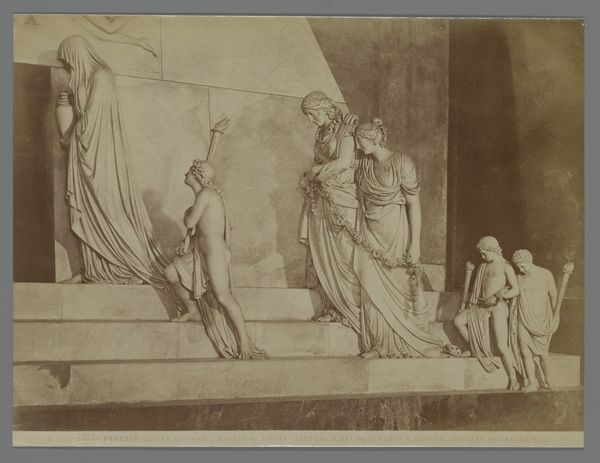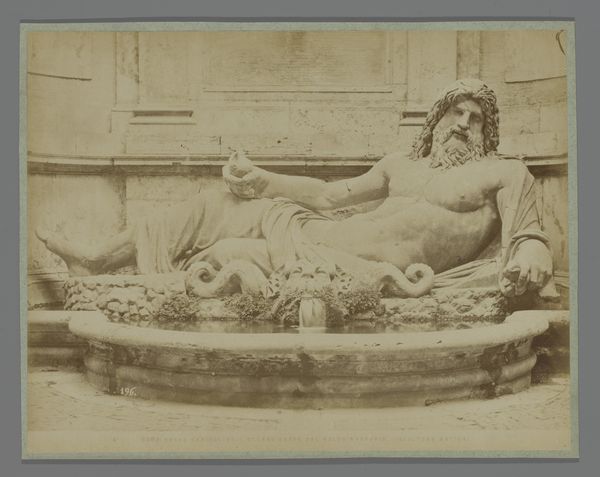
print, relief, photography, sculpture
# print
#
relief
#
classical-realism
#
charcoal drawing
#
photography
#
sculpture
#
history-painting
Dimensions: 22 × 17.7 cm (image/paper)
Copyright: Public Domain
Curator: This gelatin silver print by Eugène Atget, taken between 1906 and 1907, offers a detailed study of a vase at Versailles. The Art Institute of Chicago holds this particular print. What are your initial thoughts? Editor: The tonality is beautiful. The subtle gradations in gray highlight the sculpted forms, emphasizing the tactile quality of the stone and really bringing out the figures' serene gestures. There's a rhythmic interplay between the light and shadow that is rather appealing. Curator: Indeed. The image serves not only as a document of classical sculpture but also as evidence of its social context. These vases were produced as symbols of royal power and privilege. Atget’s project itself involved cataloging the tangible remains of a declining aristocracy, offering us glimpses into a shifting social landscape. We see the vase aging. We see it outside in nature and gathering dust, as opposed to on display. Editor: And technically, Atget’s formal arrangement also contributes to the image's depth. He's meticulously framed the vase to showcase its three-dimensional relief, capturing the flowing drapery, the contorted body, and graceful poses, almost as if trying to breathe life into stone. The texture is wonderfully evoked! Curator: Don’t forget, Atget did this on commission, frequently for institutions or those working on architectural or theatrical projects that relied on understanding or preserving the visual history of Paris and its surroundings. This gets back to the notion of art production – how are things being made, for whom, and in what material context. Editor: Yes, but let’s come back to the vase! Note the way the artist used these figures – a unified composition designed to capture your eye as it traces the figures upward and around the entire perimeter. He leads you carefully along, prompting one to savor its nuanced details. Curator: All of these elements underscore that Atget's seemingly straightforward photographs transcend mere reproduction. They show history, documenting the shifts in French society through its art objects. Even in a "simple" photograph of a vase! Editor: Precisely! It’s been revealing to re-consider Atget's craftsmanship—a blend of careful arrangement and captured texture transforming mere document into something quite resonant, really. Curator: Absolutely, and by studying how and why objects were made we start to understand a great deal more than just how an art object looks!
Comments
No comments
Be the first to comment and join the conversation on the ultimate creative platform.
